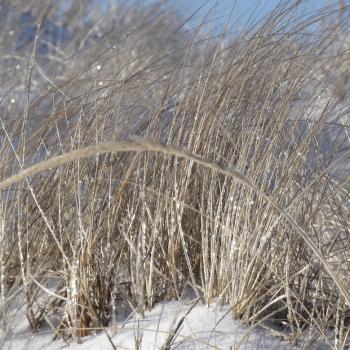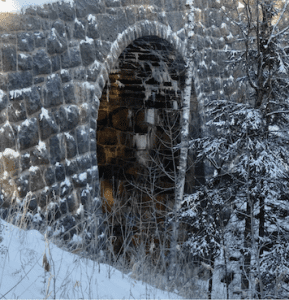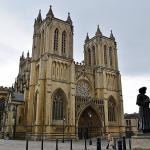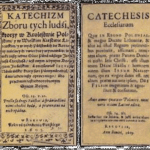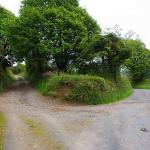In recent days, I’ve been playing around with translating some bits of Dōgen from his Eihei Koroku (Dōgen’s Extensive Record), especially from Volume 9, his collection of ninety kōans with verses. The only translation of these that I know of is by Leighton and Okumura and they are good, of course, but I’ve long wondered if I might focus them from the perspective of kōan training.
Given what we’re working with these days at Vine of Obstacles Zen, including a bunch of our students digging into the mu kōan, and also that we’re working through Dōgen’s “Guidelines for Studying the Way, #8” (which addresses the mu kōan), I started by playing around with the two verses that Dōgen offers for “Volume 9, 73, Zhàozhōu’s Dog.”
Dōgen first cites the full kōan with both “yes” and “no” responses from Zhàozhōu and then gives two verses without further comment. However, I will say a few words about both verses.
Volume 9, 73: Zhàozhōu’s Dog
A monk ask Zhàozhōu, “A little dog also has the buddhanature, no?”
Zhōu said, “Yes.”
The monk said, “Since they have, why do they run into this skin bag?
Zhōu said, “Because knowingly, they intentionally make a mistake.”
Again, a monk asked, “A little dog also has the buddhanature, no?”
Zhōu said, “No.”
The monk said, “All living beings each and everyone have the buddhanature. Why then doesn’t a dog?”
Zhōu said, “Because they are in karmic knowledge.”
Dōgen’s first verse
Whole-body little dog, whole-body buddha
It’s difficult to have a singular view, no?
Selling them for the same price, purchasing the self
Don’t worry about selling below cost or withering away
The first two lines express the tension of the this-little-dog life in the midst of the radiant-Buddha life. Although it is difficult to digest the apparent difference, that is precisely our practice, throughout the Circle of the Way, again and again.
The third line offers both a practice pointer (let go of both the this-little-dog” life and the radiant Buddha life), and the fruit of the mu kōan (purchasing the self, or we might say, “obtaining the true self”).
The fourth line is encouragement – don’t worry about you!
The cost of breakthrough is well worth the extraordinary effort that is required. Withering away, sloughing off bodymind is freedom and not something to be worried or feared.
Dōgen’s second verse
“Yes” and “no” – two buddha natures
are not the fate of living beings
Even though they seem like koumis becoming buttermilk
they are the same as the absorption of total cessation
In this verse, Dōgen again highlights the apparent duality of “yes” and “no”, of being and nonbeing, and boldly asserts that seeing things as two is not the end of the story. A singular view may be difficult, but it is not our fate to be locked in the prison of the divided heart.
The third line contrasts two things that are much alike, cultured horse’s milk and cultured cow’s milk, aka, po-tato/pot-ato. For Dōgen, “yes” and “no” are like that – neither same, nor different.
And in the fourth line, Dōgen identifies “yes” and “no” with the “absorption of total cessation” – a technical dharma term (滅尽定, Skt. nirodha-samāpatti) defined in the Buddhist Digital Dictionary as follows:
“This concentration has the power to extinguish mental functions in the first six consciousnesses as well as the afflicted manas (seventh consciousness), it is said to be the concentration practiced by sages. Since low-level practitioners and non-Buddhists are afraid to extinguish their individuality, they do not enter this concentration of complete extinction, but instead can only attain, at best, thoughtless concentration.”
The parallel between what Dōgen identifies frequently as not-thinking (aka, thoughtless concentration) and non-thinking (the absorption of total cessation) is striking. And that the old dog Dōgen sees both “yes” and “no” as the absorption of total cessation/non-thinking, points to the liberation realized through becoming and breaking mu open.
Open!
One general comment
Both of these poems by Dōgen are “inside jobs” and reveal a intimate understanding that can, in my view, only come from working with mu as a kōan and probably also working with students.
Up next from Dōgen, “Right now, clouds and water practitioners, is there someone who gets it?”
Dōshō Port began practicing Zen in 1977 and now co-teaches with his wife, Tetsugan Zummach Sensei, with the Vine of Obstacles Zen, an online training group. Dōshō received dharma transmission from Dainin Katagiri Rōshi and inka shōmei from James Myōun Ford Rōshi in the Harada-Yasutani lineage. He is also the author of Keep Me In Your Heart a While: The Haunting Zen of Dainin Katagiri. Dōshō’s translation and commentary on The Record of Empty Hall: One Hundred Classic Koans, was published in 2021 (Shambhala). His third book, Going Through the Mystery’s One Hundred Questions, is now available. Click here to support the teaching practice of Dōshō Rōshi.



